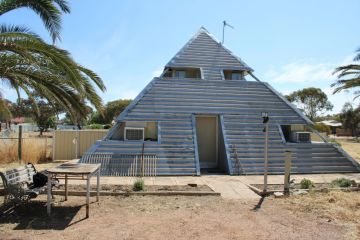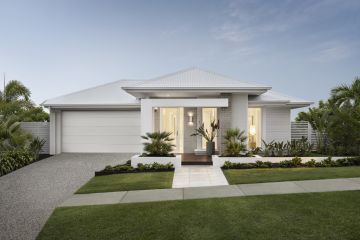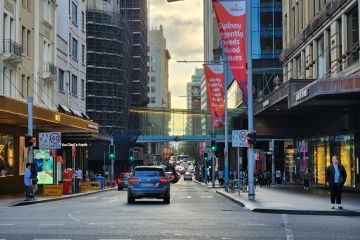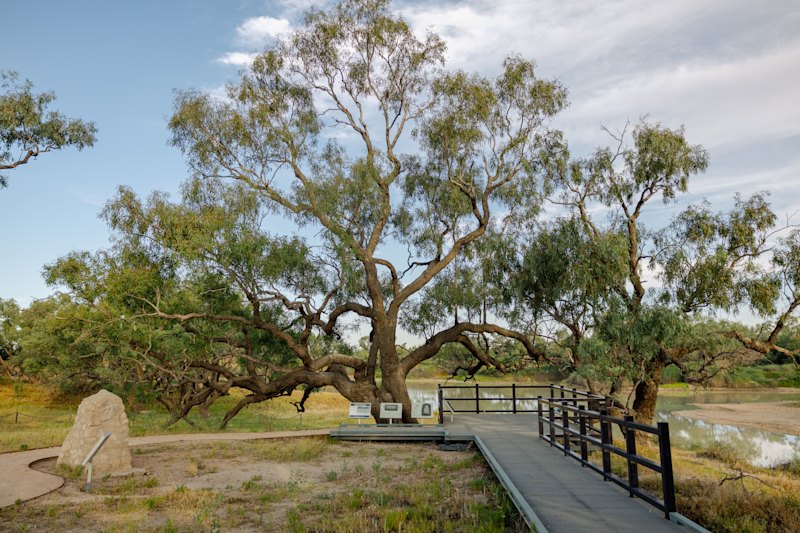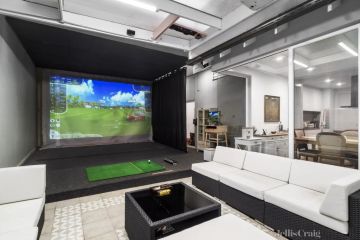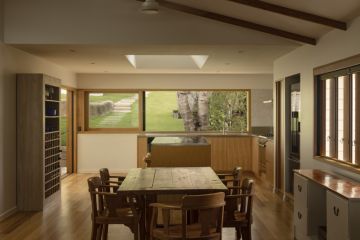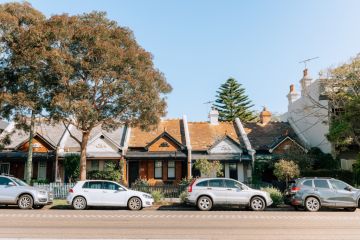The dame of Australian design: The enduring legacy of Janne Faulkner
Fifty years ago, the revolutionary Melbourne development firm Merchant Builders asked an unknown, untrained Janne Faulkner to become the designer of their house interiors.
The partnership between Merchant Builders’ architects – which included Graeme Gunn, who responded to the local light, a preference for informal living and interconnectedness in the shape and orientation of big-boned, big-windowed houses – and the instinctive interior designer, seeded a new and identifiably Australian decor language.
This is in the DNA of the business Faulkner founded in 1967.
The name of Nexus Designs alluded to the notion of the connection between architecture and interiors, and, Faulkner says, “the relationship to the landscape”.
But in the late 1960s, when Faulkner says “the average house was a three-bedroom, one-bathroom brick veneer facing the wrong way”, such synergies were regarded as unimportant – even sissy.
Now in her 80s, Faulkner, who has an AM in recognition for her services to design and the arts, and who is a member of the Design Institute of Australia’s august Hall of Fame, has retired.
Her influence, as her long-time business partner Harley Anstee, and her successor in the creative director’s role Sonia Simpfendorfer acknowledge, prevails in every project the firm tackles, whether it be in Australia or internationally, or a home or corporate headquarters.
So what are the hallmarks of the exceptionally enduring Nexus style? In her understated way, Faulkner summarises it as “comfort and practicality, great use of colour, a love of contemporary art and books, a limited use of materials” and – probably most importantly – “taking away more than adding”.
To Anstee “it’s that Janne is such an incredible thinker and reader who never repeated herself”.
“That meant that every project was fresh and related directly to the client. We really listen to briefs.”
The managing director and co-designer who worked beside Faulkner from 1975 believes it was an advantage “that she never went to design school because all her direct, lived experiences added to everything we did”.
In a local design landscape where they were among a few pioneering specialists, the Faulkner-Anstee partnership was innovative on all manner of fronts, including writing a series of books.
One, Using Australian Colour, is a guide to using paint tonalities that resonate with our indigenous soils and skies, leaves, wildflowers, rocks and eucalypt-imbued atmospheres and is into its third edition.
Indeed, Anstee has long been guiding the development of the colours used in Bluescope Steel’s Colorbond range. “When we started there were eight colours,” he says. “Now there are 22.”
Of Australia’s indigenous palette, he says: “It is greeny-blues and grey blues. Subdued but not muted.
“It is the red earths of Central Australia and the purples of the Blue Mountains. Colours that have strength and complexity rather than brilliance.”
Simpfendorfer has been creative director at the expanded Nexus for 20 years, yet her admiration for her autodidactic master remains palpable, and the philosophy she learned through Faulkner is so practised it can be distilled in a few instructions. The major one is to “make a decision” because in the myriad choices, knowing where to start is the key point of access.
Other crucial considerations are: emphasising natural light; space planning “that is about simple functionality so that it will work for the people who will use it”; practical joinery “in places where people want and need it”; a minimum number of finishes; keeping it natural (“never doing overwrought, over-contrived design”) and use of art.
“Janne’s love of Australian art goes back to the houses full of paintings she knew in her childhood,” Simpfendorfer says.
She believes good interior design, “is about a lot more than creating Instagrammable surface styling”.
“Styling is not the end point. Good design is about keeping things simple, fuss-free and enduring.”
And, Anstee says, “about having a sense of surprise and whimsy”.
We recommend
States
Capital Cities
Capital Cities - Rentals
Popular Areas
Allhomes
More
